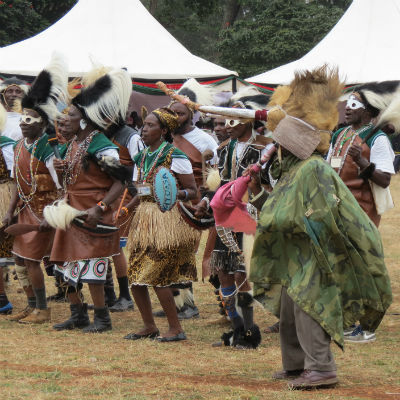Elephants: a community perspective
ELEPHANTS: A COMMUNITY PERSPECTIVE
AS PART OF OUR ELEPHANTS IN CRISIS CAMPAIGN, BORN FREE KENYA’S EDUCATION OFFICER PHOEBE ODHIANG EXPLAINS HOW COMMUNITIES IN MERU CELEBRATED WORLD ELEPHANT DAY
Elephants are in crisis. In Kenya – as in most parts of Africa – the communities that live alongside them are in a dilemma too. The crisis is how to maintain co-existence. As conservationists, we understand the science and socio-economic value of elephant conservation. But for the local communities that live side-by-side with elephants and sometimes clash, these benefits need to translate to their everyday lives.
This year’s World Elephant Day national celebrations were held in Meru Town, located in the Mount Kenya region. For the local communities in Meru and surrounding areas, every day is an elephant day. It is their way of life.
As Meru County Governor, Dr Kiraitu Murungi, said: “In Asia, we hear that elephants carry people on their backs, but here in Meru County, we are the ones who carry the elephants on our backs.”
Many communities bear the burden of elephant conservation. The displacement and loss of livelihoods from elephant raids; death and injuries from elephant attacks; insecurity and fear from elephants straying from protected areas; the constant stress of having to watch your back when you hear a rustle in the bushes; the utter shock at the speed of an elephant in full flight. The list goes on.
On the day of the national celebrations, a family of elephants had to be driven back into the nearby Nkunga Forest – a migratory route through which elephants moving from Mount Kenya Forest to the lower and upper Imenti Forests pass. The elephants have to cross the Meru-Nanyuki Highway, which those attending the celebrations also used to access the venue.
Despite bearing the brunt of conflict with elephants, more than 10 groups from the Meru community sang songs of praise and the promise of conservation to elephants. These are ordinary folk and children who see and accept elephants as part of their everyday lives. They believe that the elephant has its place in this shared world because elephants have been a part of their lives for generations and they have co-existed with them. Elephants are a crucial backdrop and their absence would signal that something was terribly wrong.
When those directly aggrieved are the ones who praise the ‘perpetrator’, then conservation education is getting it right. Education must be a continuous and deliberate activity if economic development and conservation are to operate in tandem. Wildlife conservation is the backbone of Kenya’s tourism industry and one of the biggest contributors to GDP.
As the elephant scientist Dr John Waithaka, Chair of the Board of Trustees for Kenya Wildlife Service, said during the celebrations: “Kenya for elephants and elephants for Kenya.” Co-existence is possible if all partners, including national and county governments, communities, NGOs and others, work together for both elephants and people.

